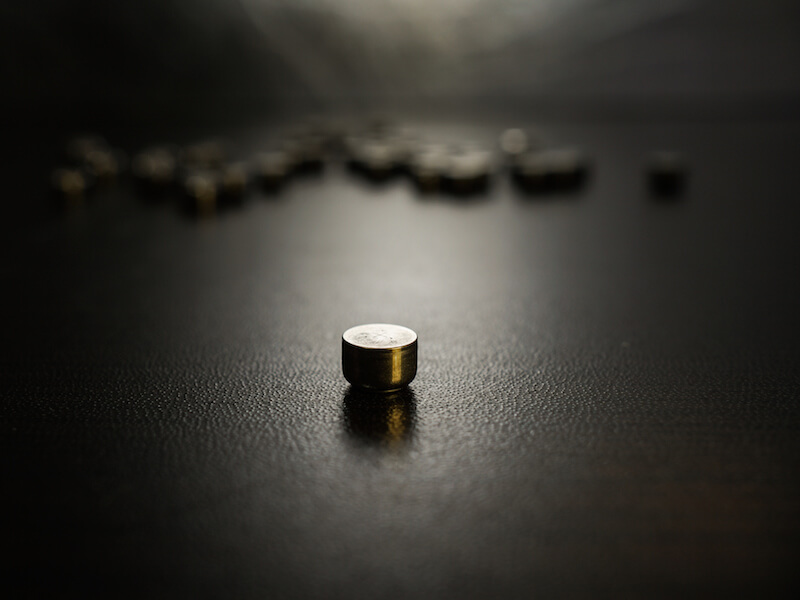
Contemporary technology has evolved the way we power electronics of all kinds, from cameras to phones to music players. A powerful, rechargeable hearing aid battery is finally realizing the hopes of hearing aid manufactures to replace the antiquated disposable power sources of the past.
Disposable hearing aid batteries have historically been the power source of choice among manufacturers, with size 312 batteries serving as one of the more common battery types. Today, the most popular version of these batteries is generally known as a “zinc-air” battery.
Disposable Hearing Aids Have a Disadvantage
As the name would imply, a zinc-air battery is affected by the presence of air. When it comes to the 312 batteries used in a lot of hearing aids, the user needs to pull a small tab off the back of the battery before it is turned on and functional.
The moment it is fully oxygenated, it starts to lose power. So the power is depleting even if the user isn’t currently using it.
The biggest disadvantage to disposable batteries, for most users, is how long they last. Some reports have cited the standard life expectancy of a size 312 disposable battery to be from 3 and 12 days, which means users could switch out their batteries around 120 times per year.
Because of this, besides having to purchase 120 batteries, the user will have to switch and correctly dispose of batteries at least twice every week. From a cost perspective alone, that likely equates to more than $100 in battery purchases.
Advancements in Rechargeable Batteries
Luckily, for hearing aid wearers looking for another alternative, there have been significant improvements to rechargeable hearing aids that now make them a feasible option.
The vast majority of individuals would use rechargeable hearing aids if given an alternative according to various research. Over the years, these models were not practical because they didn’t keep a charge long enough. However, modern innovations now facilitate an entire day of use per charge.
Users won’t see substantial cost benefits by switching to rechargeable batteries, but where they will see a demonstrated improvement is in quality of life.
In addition to supplying 24 hours of charge time, these new models lead to less frustration for the user, since there’s no more swapping and correctly disposing of batteries. They just need to place the battery on the charger.
When a disposable battery nears the end of its life it can’t run your hearing aid at full capacity. There’s also no exact way to know how close to being inoperable the battery actually is. So the batteries might die at the exact moment that a user needs them the most which might even put them in danger. Not only is this a safety hazard, but users may miss important life moments due to a dead battery.
Types of Rechargeable Hearing Aid Batteries
Rechargeable batteries come in numerous different materials, each offering unique advantages. The ability to hold a charge for 24 hours is one reason why integrated lithium-ion batteries are one viable option that manufacturers supply. And smart-phones are powered by this same kind of battery which may be surprising.
Silver-zinc technology is another material used for modern rechargeable hearing aids. Originally, these revolutionary batteries were manufactured for Nasa’s moon missions. You can even use this technology to update and retrofit the existing hearing aids you’re comfortable with by changing the device to rechargeable power. Just like lithium-ion, silver-zinc can also provide enough power to last you all day.
There are also models that allow you to recharge the hearing aid without taking out the battery. At night, or at some other time when the hearing aid isn’t in use, the entire hearing aid can be placed directly into the charger
While all of these rechargeable solutions provides substantial benefits over disposable batteries, each approach should be properly vetted to get a complete picture and to see if it’s best for you.
If you’re searching for more information about hearing aid technology or how to determine the ideal hearing aid to meet your needs, we encourage you to take a look at our hearing aids section.
